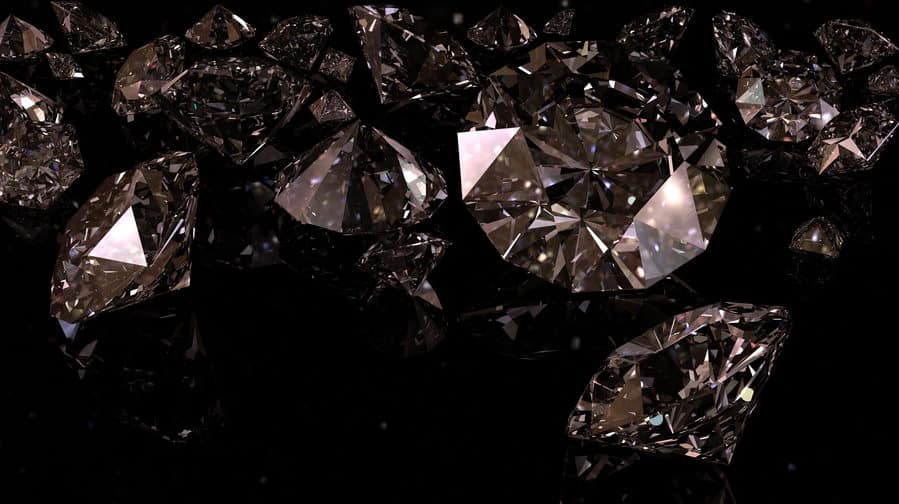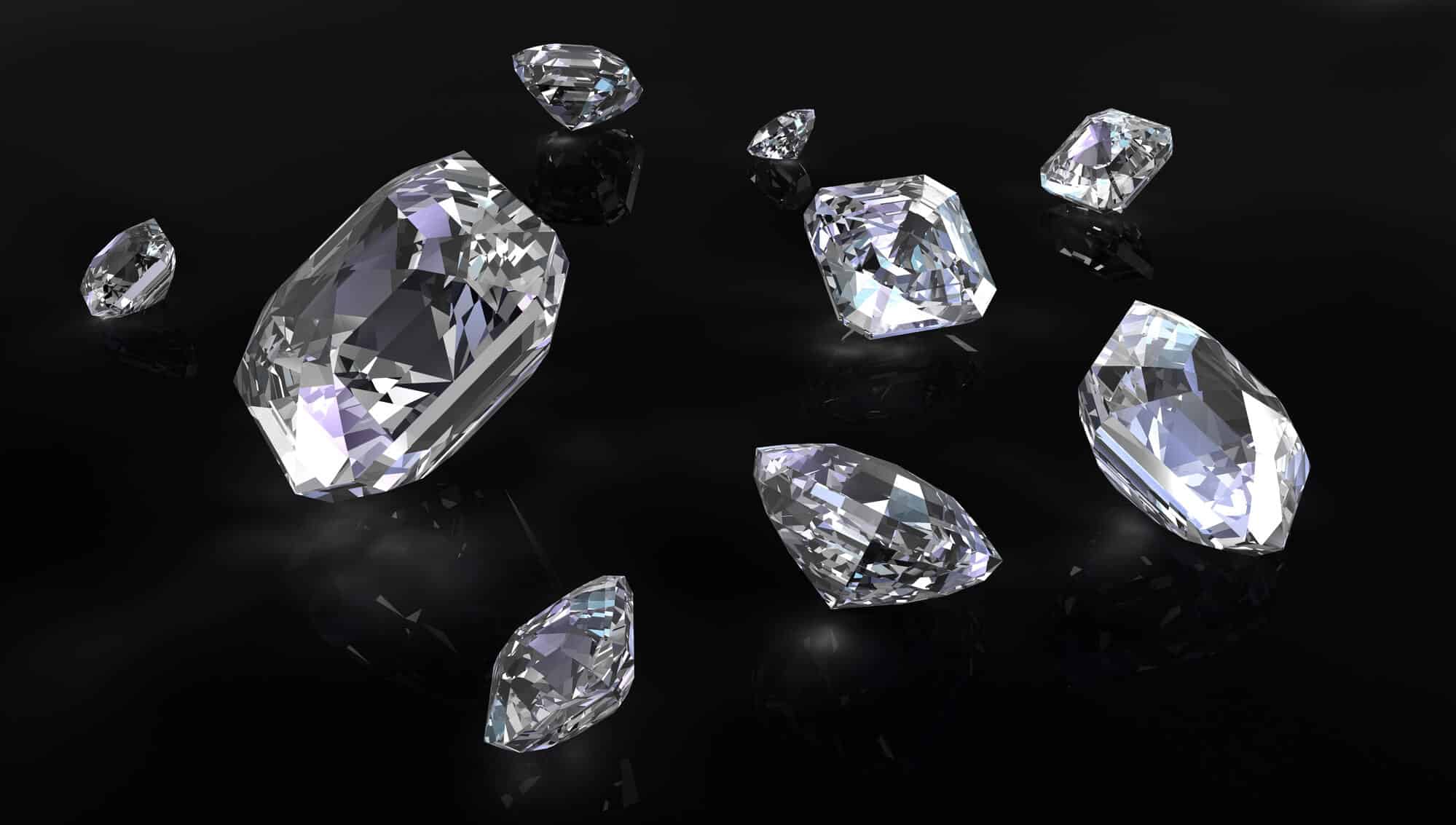

In the dazzling world of diamonds, the Asscher cut stands out as a unique and exquisite choice for those in search of a truly remarkable gemstone. The cut, often regarded as the key factor that determines the beauty and brilliance of Asscher diamonds, plays a significant role in elevating their quality and value. This remarkable cut showcases the diamond’s exceptional facets, transforming it into a mesmerizing work of art.
As we delve into the intricate details of the Asscher cut, we will unveil the secrets behind its unparalleled allure, providing you with a deeper understanding of what sets these extraordinary diamonds apart in the realm of luxury and sophistication.
When it comes to purchasing Asscher diamonds, one of the most important factors to consider is clarity.
With their unique step-cut faceting and mesmerizing depth, Asscher diamonds are truly a sight to behold. However, their beauty truly shines when the stone exhibits exceptional clarity, allowing light to reflect and refract in the most captivating manner. Learn about the secrets behind the significance of clarity in Asscher diamonds and discover how this crucial element elevates their quality and worth.

Given their vintage appeal, Asscher diamonds are favored by those seeking a blend of elegance and antique sophistication. A high-clarity Asscher diamond ensures that the intricate internal structure is free from any visible imperfections, which would otherwise distract from the captivating geometric pattern produced by the cut. By emphasizing the clarity of an Asscher diamond, you are ensuring that its breathtaking hall of mirrors effect remains undisturbed, thereby enhancing its overall beauty and value.
When purchasing a diamond, it’s critical to understand the importance of the 4Cs (cut, carat, color, and clarity) that determine a diamond’s quality. In the case of Asscher diamonds, clarity plays a vital role in weighing the stone’s worth, as it directly impacts the diamond’s structural integrity. For instance, a larger inclusion in the diamond could result in a weaker structure, making it more susceptible to damage. Therefore, seeking a high-clarity Asscher diamond is essential in preserving the stone’s long-term durability.
High-clarity Asscher diamonds are also valuable from an investment perspective, as they tend to hold their value more effectively over time. As a diamond’s clarity grade improves, so does its rarity, elevating its worth in the market. By investing in an Asscher diamond with excellent clarity, you are not only acquiring a stunning piece of jewelry but also securing a potential financial asset with lasting value.
Asscher diamonds, named after the Asscher brothers who introduced this unique cut in 1902, are known for their distinct step-cut faceting and square shape with cropped corners. This elegant cut allows for a stunning display of light and color, making it a popular choice for engagement rings and other fine jewelry pieces. However, the unique characteristics of an Asscher diamond also make it essential to understand the clarity grading scale when evaluating these gemstones.
The Gemological Institute of America (GIA) has developed a universal clarity grading scale that is widely accepted in the diamond industry. This scale is used to evaluate the presence of inclusions and blemishes in a diamond, which are natural imperfections that can affect its overall appearance and value. The GIA clarity scale consists of six categories, ranging from Flawless (FL) to Included (I), with several subcategories within each.
When choosing an Asscher diamond, it is important to consider the clarity grade in conjunction with other factors such as carat weight, color, and cut.

Clarity is a key factor that affects a diamond’s overall value, and Asscher diamonds are renowned for their exceptional clarity. The unique step-cut design and large, open, octagonal table of an Asscher diamond make the inclusions and imperfections more visible than in other cuts. As a result, only high-clarity diamonds can be used for creating these splendid gems, ensuring that the final product is of exceptional quality.
The increasing demand for Asscher diamonds from both collectors and consumers is another driving force behind their investment potential. With a distinct appearance and a stylish vintage appeal, Asscher diamonds are often sought after for unique, custom-designed engagement rings and fine jewelry. This ever-growing popularity leads to sustained demand and increased market value, making them a rewarding investment opportunity.
Another factor that contributes to the long-term value of Asscher diamonds is the rarity of these gems. The meticulous craftsmanship and precision required to create an Asscher diamond result in limited production and increased scarcity. The rarity of these diamonds, combined with their exceptional clarity, further elevates their value in the eyes of investors and collectors.
In the world of diamonds, size does matter. Carat weight is a crucial factor that plays a significant role in determining the quality and value of Asscher diamonds.
The term ‘carat’ is used to measure the weight of a diamond, where one carat is equivalent to 200 milligrams. As we delve deeper into the fascinating realm of Asscher diamonds, understanding the impact of carat weight on the pricing and overall appeal of these gemstones becomes essential.
The intricate relationship between carat weight and Asscher diamond pricing is a fascinating aspect of the diamond industry. As the primary factor affecting the price of a diamond, carat weight is a critical point of consideration for anyone looking to purchase an Asscher cut diamond. This complex relationship demonstrates that the diamond’s size is not the only determinant of its value; rather, the weight significantly influences the final price tag.
It is essential to understand that the price of an Asscher diamond does not increase linearly with carat weight. Instead, the price per carat tends to escalate exponentially. Smaller diamonds, under a carat, will have a lower price per carat, but as the stone’s weight increases, so does the cost per carat. This means that a 3-carat Asscher diamond may cost significantly more than three 1-carat diamonds of the same quality.
Apart from carat weight, other factors also play a vital role in determining the overall value of an Asscher diamond. These include the 4 Cs of diamond grading: carat weight, color, clarity, and cut. While the Asscher cut is already a distinctive factor, the diamond’s color and clarity can also significantly impact the pricing. Premium quality Asscher diamonds with high color and clarity grades will command a higher price in the market.
The beauty and allure of Asscher cut diamonds are undeniable, but when it comes to evaluating their size and impact, carat weight plays a crucial role. Invented by Joseph Asscher in 1902, the Asscher cut diamond is characterized by its square shape, cropped corners, and unique stepped facets. Though carat weight is a critical factor for all diamonds, its influence on the perceived size of Asscher diamonds is particularly significant, as the cut’s distinctive features play a key role in the stone’s overall appearance.
When comparing Asscher diamonds of equal carat weight, the depth and proportions of the cut can dramatically impact the perceived size of the diamond. A well-proportioned Asscher cut will have a larger table (the flat top facet of the diamond) and more balanced depth, showcasing the stone’s brilliance and making it appear larger than a poorly proportioned diamond of the same carat weight. This is an essential consideration for those seeking to optimize the visual impact of their Asscher cut diamond.
It is worth noting that Asscher diamonds inherently have a lower spread (the measurement of the diamond’s surface area) than other cuts, such as round or princess cuts. Due to the Asscher cut’s stepped facets and distinct geometric design, the focus is predominantly on the diamond’s clarity and brilliance rather than its size. However, as carat weight increases, the spread of an Asscher diamond also expands, which in turn enhances its perceived size.
Another factor influencing the perceived size of Asscher diamonds is color. In general, larger carat weights tend to highlight a diamond’s color more dramatically. As the carat weight of an Asscher cut diamond increases, any presence of color can become more apparent, particularly in lower color grades. In such cases, choosing a higher color grade can help ensure that a larger Asscher diamond retains its mesmerizing impact without being compromised by visible color.
The art of cutting Asscher diamonds is an intricate process that requires expert skill and precision to achieve the perfect balance of clarity, symmetry, and light performance. Asscher cut diamonds, first developed in 1902 by the Asscher brothers, are known for their mesmerizing square shape with a high crown, deep pavilion, and bold step-cut facets. These unique characteristics, derived from the art of cutting, are what make Asscher diamonds so appealing and captivating to the eye, enhancing the overall clarity of the stone.
Precision plays a significant role in the cutting process of Asscher diamonds, as it directly impacts the clarity and brilliance of the final product. Master diamond cutters meticulously shape each facet of these stones to exact proportions, ensuring that light entering the diamond is optimally reflected and refracted. This precision cutting ultimately maximizes the clarity of the Asscher diamond, showcasing the high quality and exceptional beauty of these stones.
Symmetry is another crucial aspect of cutting Asscher diamonds, as it dictates the stone’s overall balance and harmony. A perfectly symmetrical Asscher diamond consists of equal proportions, with each facet geometrically aligned and evenly distributed. This creates a mesmerizing pattern that intensifies the clarity of the diamond, as light is evenly dispersed throughout the stone, amplifying its natural sparkle and brilliance.
The cutting process for Asscher diamonds requires patience, expertise, and an eye for detail, as even a small deviation from the ideal proportions can lead to a significant loss of clarity. The fine balance between precision and symmetry ensures the successful execution of the Asscher diamond’s iconic cut, ultimately elevating its appeal and visual impact.
In the realm of exquisite gemstones, the Asscher diamond holds a prominent position with its unique charm and captivating allure. Among the various factors that contribute to its unparalleled beauty and worth, color – or rather, the absence of it – plays a pivotal role.
Look into the fascinating world of colorless Asscher diamonds, unraveling the secrets behind their rarity and how this attribute elevates their value in the eyes of discerning collectors and aficionados alike.
An essential aspect to consider when purchasing an Asscher diamond is its hue, which is determined by the Color Scale. The color scale is a grading system established by the Gemological Institute of America (GIA) that ranges from D (colorless) to Z (light yellow or brown). The color grade of an Asscher diamond significantly impacts not only its visual appeal but also its value.
The pristine beauty of a colorless Asscher diamond, with a grade of D, is highly sought-after due to its rarity and exceptional brilliance. The step-cut faceting of this diamond cut showcases the gem’s clarity, making the sign of the color scale even more critical. As the color grade moves toward Z, the diamond hue becomes more noticeable, which, in turn, may affect its desirability among buyers who prefer a more transparent, icy appearance.
However, the appeal of an Asscher diamond’s hue is subjective, and some buyers may find lower color grades with a warm, subtle tone equally captivating. Particularly, when set in specific metal types like yellow or rose gold, the diamond hue can exude a vintage charm that’s becoming increasingly popular. It is crucial to becoming familiar with the color scale, as it will guide you in selecting the perfect Asscher diamond hue that matches your personal preferences and style.

When assessing an Asscher diamond, its transparency directly correlates to its color grading. The Gemological Institute of America (GIA) devised a color scale ranging from D (colorless) to Z (light yellow or brown), with colorless diamonds being the rarest and most valuable. An Asscher diamond with high transparency, such as one that falls within the D-F range, possesses a luminous quality that sets it apart from diamonds with a lower color grade.
Another aspect that significantly contributes to the desirability of a colorless Asscher diamond is its ability to maximize light performance. The Asscher cut, known for its intricate facet arrangement and large table, showcases the diamond’s inner fire and scintillation. Impeccable transparency allows for the optimal passage of light through the diamond, resulting in a remarkable display of sparkle and brilliance, which further elevates the allure of these beautiful gems.
The rarity of colorless Asscher diamonds also plays a significant role in their desirability. As only a small fraction of diamonds mined worldwide possess the necessary characteristics to qualify as colorless, these gems become valuable investments for those who appreciate their magnificent beauty. The combination of the unique Asscher cut and the exceptional transparency ensures that colorless Asscher diamonds remain a cherished symbol of love and commitment for generations to come.
In conclusion, the Asscher cut is a remarkable choice for those seeking a unique and exquisite diamond. The cut’s distinctive features, such as the square shape, stepped facets, and cropped corners, contribute to the exceptional beauty and brilliance of Asscher diamonds. Clarity is a vital factor in determining the quality and value of these diamonds, as the cut emphasizes the visibility of inclusions and blemishes. High clarity ensures the captivating geometric pattern remains undisturbed, enhancing the overall beauty and value of an Asscher diamond. The Gemological Institute of America (GIA) provides a clarity grading scale to evaluate the presence of imperfections in Asscher diamonds.
Investing in Asscher diamonds can be a wise choice, given their unique cut, history, and increasing demand. The exceptional clarity of these diamonds, coupled with their vintage appeal and limited production, contributes to their long-term value. Carat weight also plays a significant role in determining the price and perceived size of Asscher diamonds. Precision and symmetry in the cutting process enhance the clarity and brilliance of these diamonds. Additionally, the absence of color, or a high degree of transparency, adds to the rarity and value of Asscher diamonds, with colorless diamonds being particularly sought after.
Overall, the Asscher cut offers a mesmerizing blend of elegance, sophistication, and vintage charm, making Asscher diamonds a captivating choice for those seeking a truly remarkable gemstone.
Contact us today at Shira Diamonds to know more!